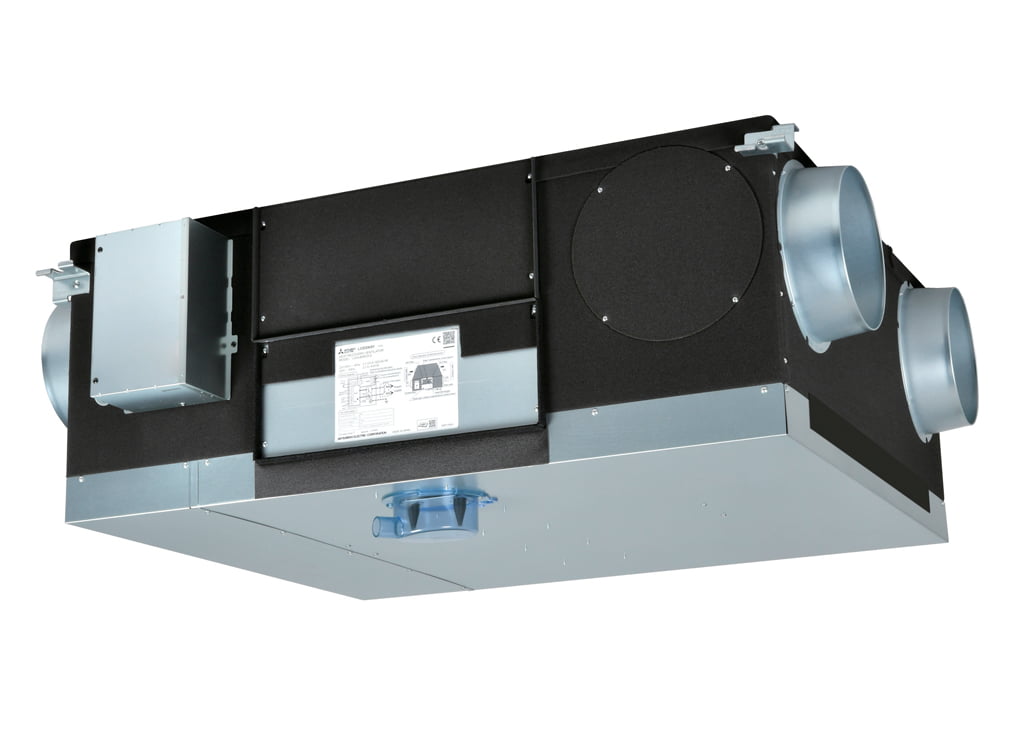Mitsubishi Electric Australia has launched the LGH-RVS sensible core heat exchanger, the latest development in its Lossnay heat recovery ventilator (HRV) line-up. The company says the solution is aimed at Australians looking to bring fresh air into buildings and maximise ventilation.
“Modern buildings have a high degree of thermal insulation and require some form of mechanical ventilation,” says Mitsubishi Electric. “Lossnay systems provide a solution in the form of decentralised ventilation and heat recovery by removing stale air and, prior to expulsion, using that air’s residual heat to pre-condition the incoming fresh air. This allows buildings to maximise efficiency whilst maintaining healthy levels of fresh air and keeping CO2 levels low.”
The existing Lossnay range features a standard core heat exchanger made from paper, which Mitsubishi Electric says allows for excellent heat retention. However, using a paper core means that rooms with high humidity, such as kitchens and bathrooms, cannot be connected to the system. The system’s core is now available in plastic, meaning that it can be used in all rooms.
“This is the first time that Lossnay can be used as an all-encompassing heat recovery ventilation, including areas with high humidity,” says Mitsubishi Electric National Product Manager Atesh Mani. “This update makes the system perfect for use in locations where air quality and in particula]r CO2 concentration is regulated under building codes.”
The LGH-RVS-E comes with a new controls designed for more flexible commissioning and two types of optional plug-and-play CO2 sensors. The CO2 sensor can also help reduce installation costs, by taking its power from the fan unit rather than needing a separate power supply.
A bypass mode allows fresh air to be brought into a room from outside without turning on the air conditioner. For example, if the air outside is cooler than the air inside the building during summer (such as during early morning or at night), bypass ventilation will draw in the cooler outside air and reduce the cooling load on the system.
The new Lossnay LGH-50RVS sensible core ventilator weighs 75kg. Filters are accessible via a side service panel and are washable in water. Maintenance reminders can be set on the remote controller alerting building users and managers when filters require maintenance.
Mitsubishi Electric says Lossnay systems are particularly popular in schools, apartment buildings, hotels, hospitals, aged care buildings, offices and well-insulated commercial buildings, especially where opening windows is not a feasible option and where air conditioning systems are required to operate daily.
Read the company profile of Mitsubishi Electric at HVAC&R Search.
 Mark Vender
Mark Vender


Leave a Reply